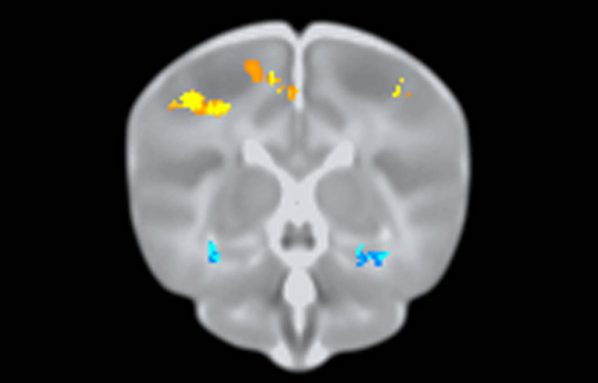Baby brain, adult disease
Scientists find signs of Alzheimer’s disease in the brains of infants

Illnesses like the memory disorder known as Alzheimer’s disease are linked to particular changes in the brain. This disease typically doesn’t show up until late in adulthood. But telltale hints that it may be coming can appear much, much earlier.
Like at birth.
A new study found brain differences linked to Alzheimer’s disease in newborns. These differences appear in a region called the medial temporal lobe. Basically, this part of the brain is smaller in people with Alzheimer’s than in those without the disease. That’s important because this region plays a role in making and keeping memories. The new study scanned the brains of 272 infants. Some of their brains had smaller medial temporal lobes too.
Until now, researchers didn’t know when the size differences first show up. Now it’s clear that the key region of the brain can be smaller at birth, reports Rebecca Knickmeyer. She’s a psychiatrist at the University of North Carolina at Chapel Hill. Her team’s new study was published in January.
Not every baby in the new study had a smaller medial temporal lobe. The brain region was more likely to be smaller in babies with a particular gene. A gene is a small bit of DNA, or genetic material. Large numbers of genes are found in almost every cell. They contain information that is passed from parent to child, such as hair color, eye color and height.
Some genes also play an important role in boosting — or lowering — risk of disease. Take the ApoE gene, for example. People with a certain version of it are three times as likely to develop Alzheimer’s disease as are persons without that version. Knickmeyer and her team used what they already knew about the ApoE gene and looked for it in newborns. The team found that babies with the version of the gene linked to an increased risk of Alzheimer’s were more likely to have smaller medial temporal lobes.
The gene doesn’t guarantee that babies who have it will eventually develop Alzheimer’s disease. Many things that happen during a person’s life can change the growth of the brain and a person’s chance of developing a disease, explains Jay Giedd. He’s a neuroscientist at the National Institute of Mental Health in Bethesda, Md., who did not work on the new study. (A neuroscientist studies the brain and how it works.)
“As we go through life, there are so many uncontrollable factors,” Giedd told Science News. “This is a way to see gene influences before the world steps i”
Power Words
psychiatry The study and treatment of mental illness, emotional disturbance and abnormal behavior.
neuroscience Any of the fields of science that deal with the structure or function of the nervous system and brain.
medial temporal lobe A series of structures in the brain that play an important role in memory.
gene A sequence of DNA. Such sequences determine a particular feature in an organism (such as eye color or risk of disease). Genes contain the instructions for building proteins and are passed from parents to children.
DNA, or deoxyribonucleic acid A long, spiral-shaped molecule inside nearly every cell of an organism. It carries genetic information.







